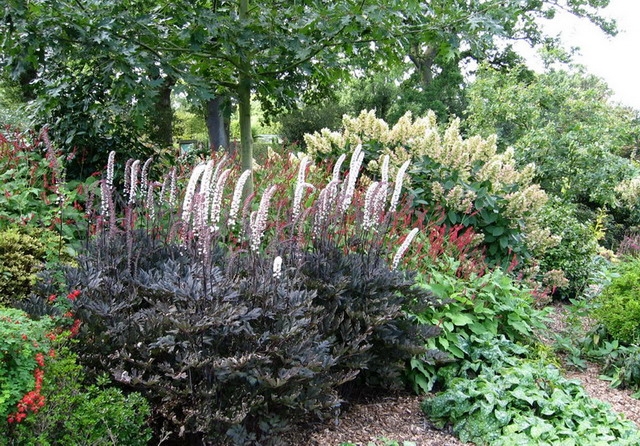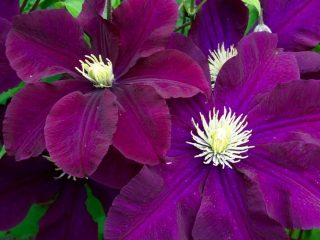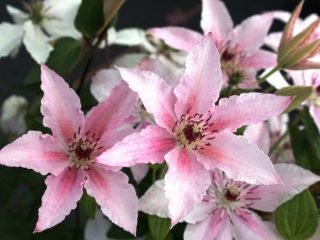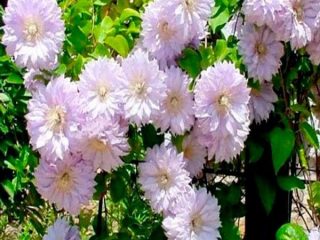Content
Black cohosh Brunette is a colorful plant whose appearance is consistent with its German name “silver candles”. The main advantages noted by gardeners - decorativeness, unpretentiousness, frost resistance, vitality and longevity - made it one of the chosen plants for garden decoration and landscape design.
Description of black cohosh Brunette
The herbaceous perennial black cohosh belongs to the Buttercup family, genus Voronets. The scientific name of the plant is cimicifuga, which is translated from Latin as “bug repellent,” for which it was actively used several centuries ago. Since then, more than a dozen varieties of this cultivar have been bred, mainly for another, decorative purpose.
Perennial black cohosh variety simple Brunette, as can be seen from the photo and description, is a bush with several straight tall stems, covered at the top with a large number of small flowers, and an armful of openwork large leaves growing in the above-ground part of the plant. The appearance of black cohosh brunette attracts the attention of anyone who looks at it:
- height can reach 1.7-1.8 m;
- stems are dark purple with brown streaks, erect, glabrous, with inflorescences at the tops;
- leaves on long petioles are located in the lower part of the stems, compound, pinnately divided, dark purple in color;
- the flowers are dazzling white with a purple receptacle, collected in inflorescences covering the upper part of the stem for 20-30 cm;
- the powerful root system consists of a woody rhizome and many fibrous roots.
In summer, the stems are decorated with small buds, which looks quite stylish. The perennial begins to bloom at the end of August. Black cohosh flowers Brunette are about 1 cm in size and open gradually from bottom to top, this can be seen in the photo. This process lasts approximately 1.5 months. The petals quickly fall off after opening, leaving a bunch of pistils with stamens, which has a very attractive appearance.
Black cohosh variety Brunette is widely used by gardeners and landscape designers for the following purposes:
- design of hedges, zoning of plots;
- in a solo planting against a green lawn;
- in mixborders, shrub and flower compositions.
From the descriptions of the gardeners and from the photos, one can understand that Brunette black cohosh bushes look very impressive in combination with plants of contrasting colors or with leaves of a different shape. Stems with inflorescences, as well as leaves on long petioles, are widely used to create bouquets.
Black cohosh variety Brunette is also known as a medicinal plant. A decoction of its roots was also used by North American Indians to treat various diseases. Black cohosh flower is used in medicine as an analgesic, antipyretic, sedative and tonic.Medicinal products with black cohosh variety Brunette are prescribed for the treatment of gynecological, urological diseases and complications associated with them.
Planting and caring for black cohosh Brunette
It is not difficult to plant perennial black cohosh in your garden. You can do this in one of several most common ways:
- seeds;
- dividing the bush;
- cuttings.
The seed method involves double stratification of seeds 6 months before planting in the ground:
- In autumn, freshly harvested seeds should be placed at room temperature (about +200C) and keep for 3 months.
- For the next 90 days, the seeds should be kept at a temperature of +40C, it can only be provided in the refrigerator.
After this, the seeds are planted in the ground or container. The first flowering of black cohosh bushes of the Brunette variety, planted with seeds, should be expected only after 3 years.
Dividing the bush is considered the most successful and convenient method of propagation. It can only be used using bushes that are at least 5 years old. The bush is dug up, young shoots with buds and roots are cut off with pruning shears. Next, the mother bush is returned to its place, and the separated part is planted on the prepared area. You can try to separate a part from the side without digging up the entire bush.
To plant black cohosh Brunette by cuttings, use green shoots of an adult plant in May. The cut cuttings are soaked in a solution that stimulates the development of the root system, and after a few days, if root shoots are present, they are planted in the ground. Temporarily cover with a plastic or glass jar to create a greenhouse effect.
Another option is to buy Brunet black cohosh seedlings in a specialized store.Planting material should be thoroughly inspected before purchase to ensure that there are no rotten or diseased roots and stems. Before planting, the roots of the seedlings must be soaked, preferably in a growth-stimulating solution.
Recommended timing
It is recommended to plant seedlings in the ground and divide the simple Brunette bush in the spring in April or May when the weather is warm, but after returning frosts. Purchased seedlings can be planted in spring and autumn. However, experienced gardeners recommend early spring so that the black cohosh root system has time to take root before winter.
Site selection and soil preparation
Unlike other varieties that do better in the shade, simple Brunette prefers sunny, windless places. Grows well in partial shade. The soil should be neutral or slightly acidic, rich in organic fertilizers and moderately moist.
How to plant
The algorithm for planting seedlings, a divided bush or a seedling purchased at the Brunet black cohosh store is approximately the same as for planting any shrubs:
- Dig a hole measuring 40x40x40 cm.
- A mixture of rotted manure with ash, mineral fertilizers and soil from the site is placed at the bottom, approximately to a height of 20 cm.
- Place the bush in the center of the hole, straightening the roots.
- Cover with fertile soil to the edge, compact and water.
When planting several Brunette black cohosh bushes, the distance between them should be at least half a meter for proper care and beautiful design, as can be seen in the photo.
An important feature of the plant is that it does not like replanting and may not take root in a new place. Therefore, in order not to risk the life of the flower, you should immediately choose the right place of residence for black cohosh for the next 20 years.
Growing Black Cohosh Brunette
Proper care of black cohosh variety simple Brunette is ordinary and contains several simple rules:
- It is necessary to ensure that the soil is slightly moist and does not dry out. To do this, the bushes are watered regularly - once every 2-3 days in the summer and once a week in the spring-autumn period.
- The soil around the bush is loosened after each watering to prevent the formation of an earthen crust that does not allow oxygen to pass through.
- Mulch the ground with sawdust, dry grass or cover it with decorative stone.
- After planting in fertile soil, it is recommended to feed the bushes of the simple Brunette variety once per season. It is better to apply complex fertilizers in early spring.
- Sanitary pruning is necessary to keep the bush healthy. To do this, in spring and autumn, inspect and remove dried, rotten, diseased stems and leaves.
Black cohosh variety simple Brunette is unpretentious in care. It easily tolerates frost and does not require special shelter for the winter. In the fall, after the bush has faded, it is enough to cut the stems at the root, and cover the remaining part with spruce branches or foliage.
Diseases and pests
The perennial black cohosh Brunette has natural immunity and is well resistant to scab and other infectious diseases, and pests bypass it. However, you need to remember:
- if the plant begins to look sick and insects are found on it, it just needs to be treated with insecticides according to the instructions;
- if there are symptoms of fungal diseases, treatment with special fungicides should be carried out;
- Do not moisten the soil too much and mulch near the trunk to prevent rotting of the roots.
If the edges of the leaves suddenly begin to dry out, the cause may be very hot weather and, as a result, the leaves are burned by the sun.
Conclusion
Black cohosh Brunette recently became known to Russian gardeners, but many people want to decorate their garden with this perennial flower. This is not difficult to do; you just need to follow simple rules of agricultural technology to create favorable living conditions for perennials.











